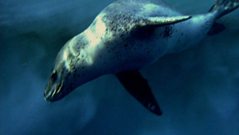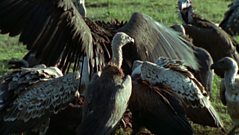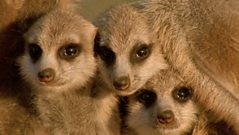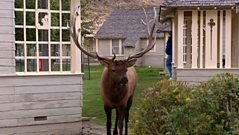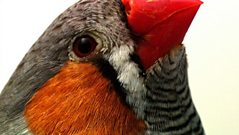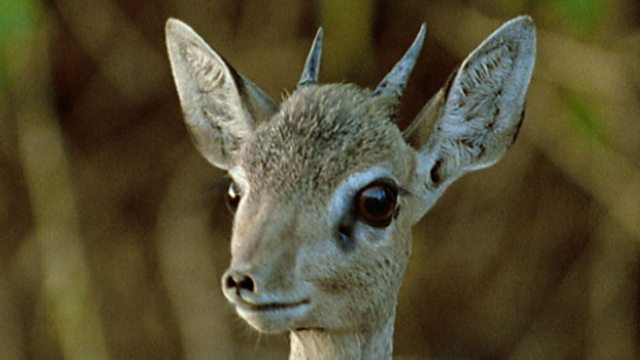
High tea
To live in harmony, browsers like the dik-dik and giraffe differ in size and shape.
Competition is so crucial to animals’ lives that it can have a massive impact on their body shape. Browsers have been moulded into different shapes and sizes so they do not tread on each other’s toes. Tiny dik-diks, for example, can nibble around the thorny lower branches in a way that no bigger animals can. Because of this they do not need to reach higher than a couple of feet. Taller impala, on the other hand, control an acacia’s middle zone. But gerenuks can stand on their back legs, something no other antelope can do. Gerenuks look more like ballet dancers than gazelles and even balance on their points. Their specially adapted hips and spines enable them to swivel vertically and stand on tip-toe on their hind legs. But there is one animal that can feed even higher still – up to six metres. The giraffe has the longest neck in the world and a flexible, leathery tongue which it can use just like a hand to pluck the highest twigs and leaves. So competition has not just pushed animals into developing different eating habits, it has helped created entirely different species that can live together in harmony.
Duration:
This clip is from
Featured in...
![]()
�鶹�� Nature
Be captivated, informed and inspired by the world's wildlife.
More clips from LIVING TOGETHER
-
![]()
Predator and prey
Duration: 01:01
-
![]()
Food fight
Duration: 01:27
-
![]()
Strength in numbers
Duration: 02:24
-
![]()
Street fighters
Duration: 02:58
More clips from Journey of Life
-
![]()
Predator and prey—LIVING TOGETHER
Duration: 01:01
-
![]()
Born brainy—HUMANS
Duration: 03:21
-
![]()
Flying colours—LIVING TOGETHER
Duration: 03:35
-
![]()
Street fighters—LIVING TOGETHER
Duration: 02:58


